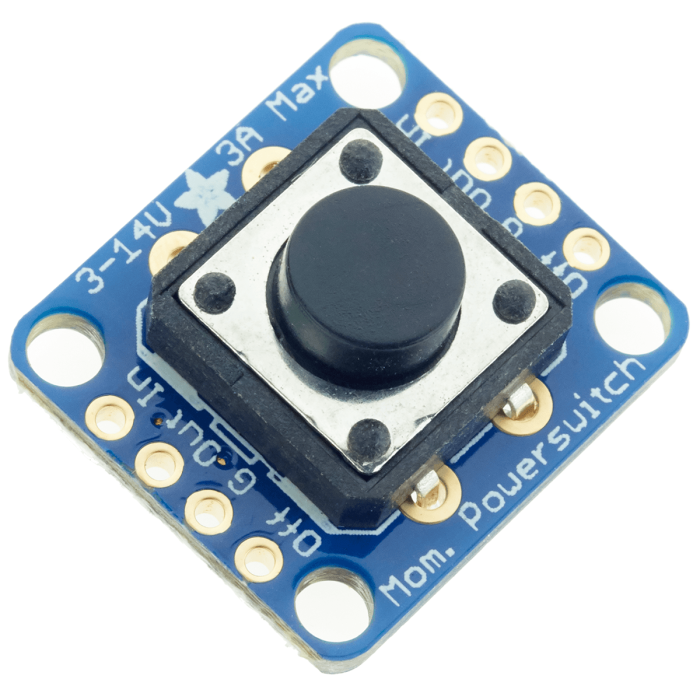Adafruit Push-button Power Switch Breakout
The Adafruit Push-button Power Switch is a tidy little design that lets you control a DC power source using an everyday tactile button. The breakout uses a latching analog circuit that is triggered by a push of the button. Press once to turn on, then press again to turn off. The circuit uses a 3A P-FET to connect and disconnect the IN pin to the OUT pin. Works great from 3V to 14VDC and up to 3A (although the FET gets a little toasty at continuous 3A draw) yet has only 0.5uA quiescent current draw.
Using it is easy: connect the power source to Ground and IN, then the load from Ground to OUT. A 12mm tactile switch is included that works well but you can solder in your own switch as well. Press the button (or short the button pins) to alternate between on or off. An on-board red LED will light up when active so you know its working. There's a fourth KILL pin, which you can use to turn off the load and/or keep it off even if the button is pressed. When 1 or more volts is applied it will instantly turn off the FET. This allows your project to turn itself off.
Comes with an assembled & tested bread-board friendly breakout board with four mounting holes, a 12mm tactile button, and some 0.1" male header you can solder to the board to plug it into a breadboard.
The power switch is an elegant way to control power to your project, but there are some things to keep in mind: since there is a pass FET, this is only for 3-14V DC voltages. This is not a mechanical switch so there is no air-gap isolation. There is a 'body diode' in the pass FET so if the load has a voltage on it that is higher than the input voltage, current will flow back to the input. There is built-in debouncing but very bouncy switches can be annoying as they will turn on and off fast instead of latching.

